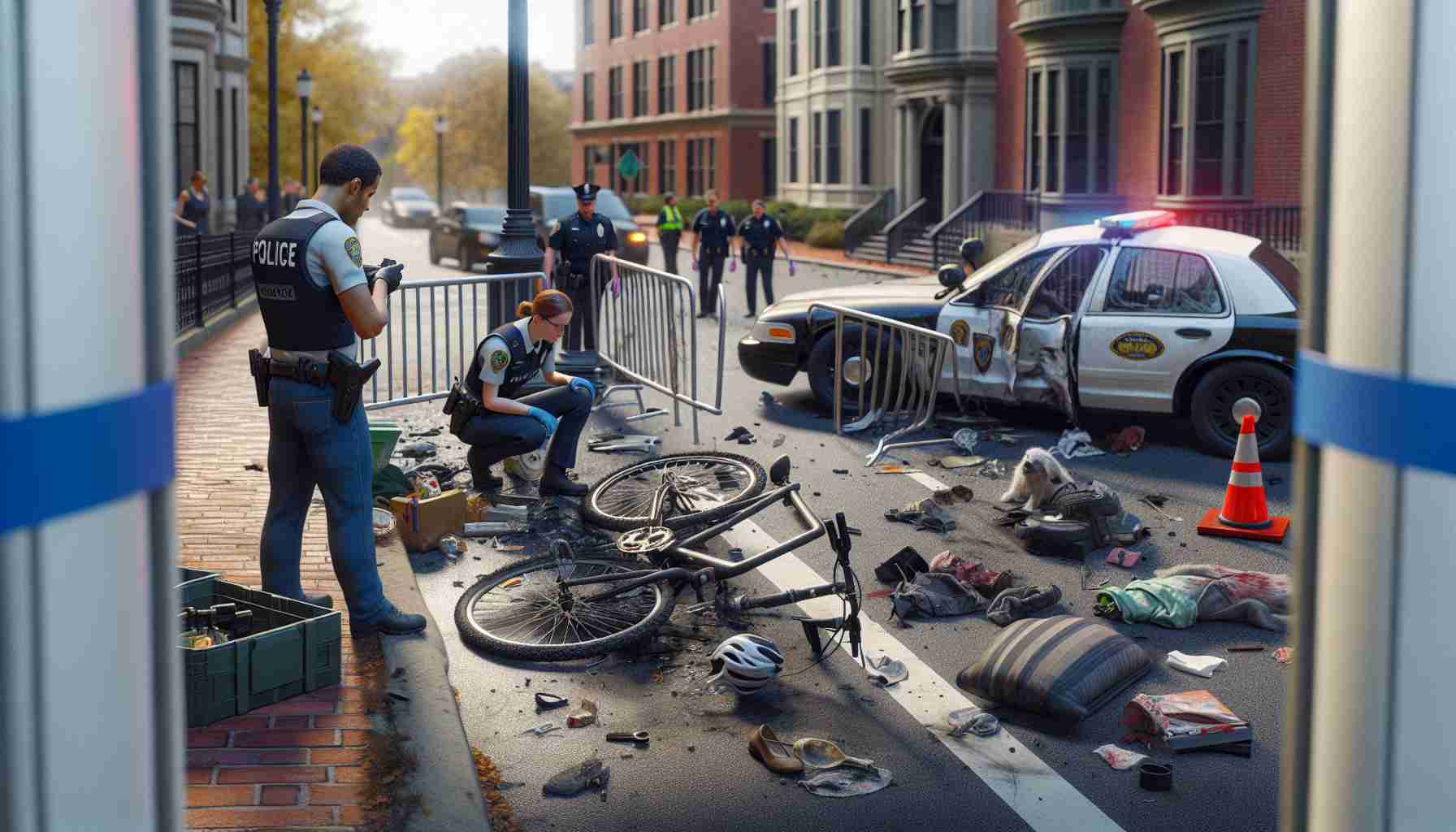A fatal accident involving a bicyclist occurred Monday evening on Memorial Drive near the DeWolfe Boathouse. The victim, a 62-year-old man named John Cochran from Newton, was riding his e-bike when he was struck by a SUV at around 5:42 p.m.
According to reports, Cochran was traveling west on the Dr. Paul Dudley White Bike Path, when a black Mercedes SUV veered off the road during heavy traffic, hitting him head-on. Witness accounts describe the incident as abrupt and devastating.
Footage from local news outlets revealed the damaged SUV with significant harm to its front end, indicating the severity of the impact. Initial assessments of the crash suggested that a young male driver lost control of the vehicle, leading to this tragic event. The conditions of the accident prompted a swift response from emergency services; however, despite their efforts, Cochran succumbed to his injuries shortly after.
This incident has raised concerns, as it marks the second incident involving a cyclist and a motor vehicle on Memorial Drive recently, and tragically the third traffic-related death in Cambridge this year.
Investigations are currently being conducted by the Middlesex State Police Detective Unit, although, as of now, no charges have been placed in connection with the collision. Authorities are seeking to understand the full details surrounding this unfortunate accident and have extended condolences to Cochran’s family.
Staying Safe on the Roads: Tips and Facts for Cyclists and Motorists
The tragic bicycle accident that claimed the life of John Cochran in Cambridge underscores the critical importance of road safety for both cyclists and motorists. Such incidents can serve as harsh reminders of the potential dangers that exist on our roads. Below are some valuable tips and interesting facts that can aid in promoting safety in cycling, driving, and sharing the roads.
1. Know the Rules of the Road
Both cyclists and drivers must be familiar with traffic laws. In many jurisdictions, cyclists have the same rights and responsibilities as motor vehicle operators. Understanding these regulations is crucial for safe interactions.
2. Wear Helmets and Safety Gear
Using a well-fitted helmet can significantly reduce the risk of head injuries in the event of an accident. Additionally, consider wearing reflective gear, especially during low-light conditions, to increase visibility.
3. Maintain Your Bicycle
Regular maintenance of your bicycle ensures that it operates smoothly and safely. Check brakes, tires, and lights before each ride. A well-maintained bike is less likely to suffer mechanical issues that can lead to accidents.
4. Use Designated Bike Paths
Whenever possible, cyclists should utilize bike lanes or paths specifically designed for them. This can greatly enhance safety by providing a separate space for cyclists, away from vehicular traffic.
5. Stay Alert and Avoid Distractions
Both drivers and cyclists should remain vigilant and free from distractions while on the road. This includes avoiding the use of mobile devices and staying focused on their surroundings to anticipate the actions of others.
6. Watch for “Dooring” Hazards
One common risk for cyclists is being struck by car doors that open unexpectedly. Always ride with a safe distance from parked cars to reduce this risk.
7. Be Predictable
Communicate your intentions clearly. For cyclists, using hand signals can inform drivers of turns or stops. For drivers, being predictable in movements can help cyclists gauge your actions better.
8. Understand the Statistics
According to the National Highway Traffic Safety Administration, bicyclist fatalities have been on the rise, making awareness crucial. Community efforts to promote safe cycling practices are essential in reducing these numbers.
9. Advocate for Local Bike Safety Initiatives
Engage with community organizations that promote bicycle safety, such as local bicycle coalitions. Supported initiatives can lead to safer roads, better bike infrastructure, and driver education programs.
10. Stay Calm in Emergencies
In the unfortunate event of an accident, it’s important for both cyclists and motorists to remain calm. Seek medical assistance immediately and exchange information while avoiding any escalation of the situation.
For more information on road safety and tips for both drivers and cyclists, visit nhtsa.gov. Raising awareness and taking proactive measures can contribute to safer roads for everyone.







